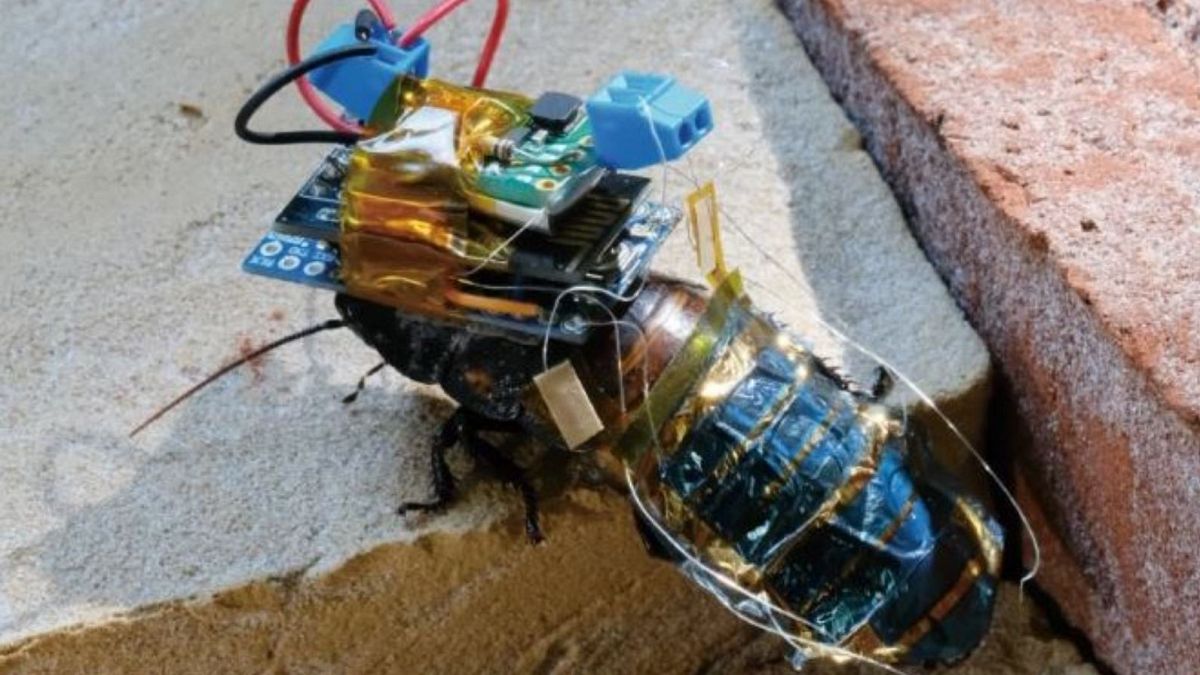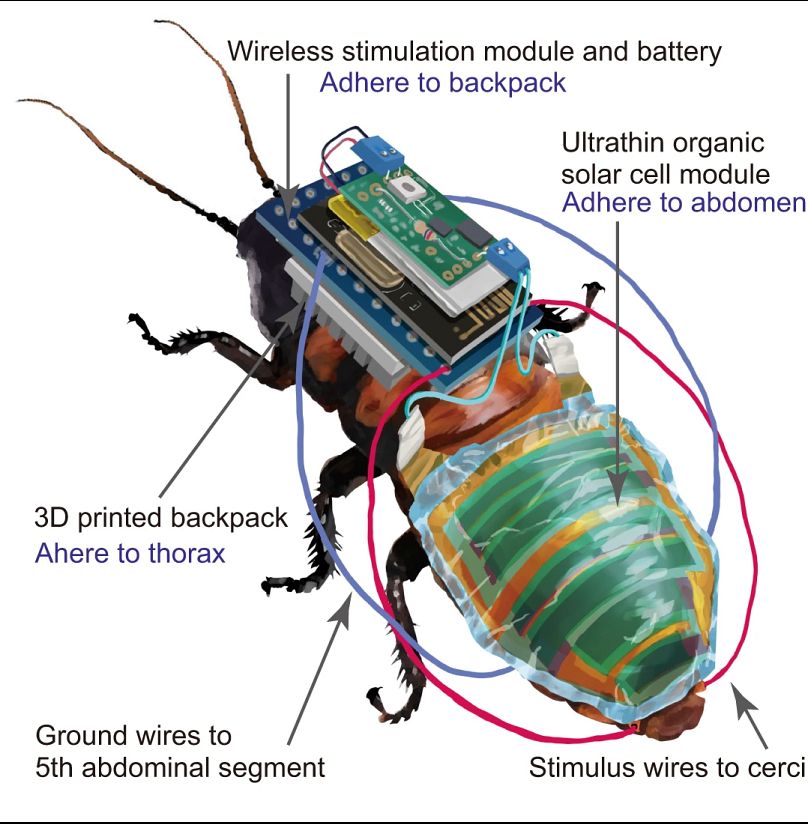The robot insects are fitted with a special tiny backpack powered by a solar cell and can be deployed in areas too dangerous for humans.
Remote-controlled cockroach cyborgs could one day be deployed on search and rescue missions, or to survey dangerous places.
It’s an idea that’s been in development for some years.
Now a team of researchers has brought this a step closer to reality, after engineering a system for creating the cyborg bugs with a much greater power output than previous experiments.
They are fitted with a special backpack which acts as a wireless control module. This is powered by a rechargeable battery, which is attached to a solar cell.
And because of the ultrathin, lightweight materials used, the cockroaches can move freely over different types of terrain.
Supercharged cyborg cockroaches
The researchers at the RIKEN Cluster for Pioneering Research (CPR) in Japan have created critter cyborgs that are essentially supercharged - at least in comparison to previous bug cyborgs.
"The body-mounted ultrathin organic solar cell module achieves a power output of 17.2 mW, which is more than 50 times larger than the power output of current state-of-the-art energy harvesting devices on living insects," said Kenjiro Fukuda, a senior research scientist at RIKEN CPR, who led the research.
The research subjects are Madagascar cockroaches - which are known for their ability to make a hissing noise to raise the alarm, assert dominance, and attract mates. They grow to around five to eight centimetres in length.
The scientists attached a special backpack to the insect that was modelled to fit perfectly and allow the creature to move freely. The backpack contains a lithium polymer battery and a wireless control module.
This module allows researchers to remotely control the insect’s movements. It does this by applying electrical stimulation to a part of the abdomen, which controls locomotion and makes the insect turn.
Researchers have been trying to develop cyborg insects for some time, but Fukuda’s team has made a breakthrough with the powering of the cyborg.
By attaching a rechargeable battery, connected to a solar cell, the cockroaches could recharge in simulated sunlight, before heading back out on a remote-controlled mission.
And this was all made possible by the tiny size and weight of the electronics involved. The solar cell module is just 0.004 mm thick.
The researchers studied the cockroach’s movements, finding its abdomen changes shape as it moves, with portions of its exoskeleton overlapping.
It was therefore crucial to design the backpack to include adhesive and non-adhesive sections, so it moved and changed shape with the cockroach’s movements.
When tested, they found the cockroaches could run twice as fast as when they were fitted with heavier or less adaptive backpacks.
"Considering the deformation of the thorax and abdomen during basic locomotion, a hybrid electronic system of rigid and flexible elements in the thorax and ultrasoft devices in the abdomen appears to be an effective design for cyborg cockroaches," said Fukuda.
"Moreover, since abdominal deformation is not unique to cockroaches, our strategy can be adapted to other insects like beetles, or perhaps even flying insects like cicadas in the future".
The research was published in the scientific journal npj Flexible Electronics.




